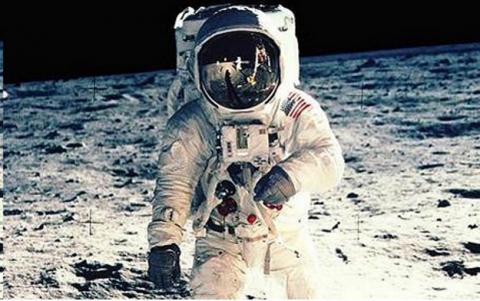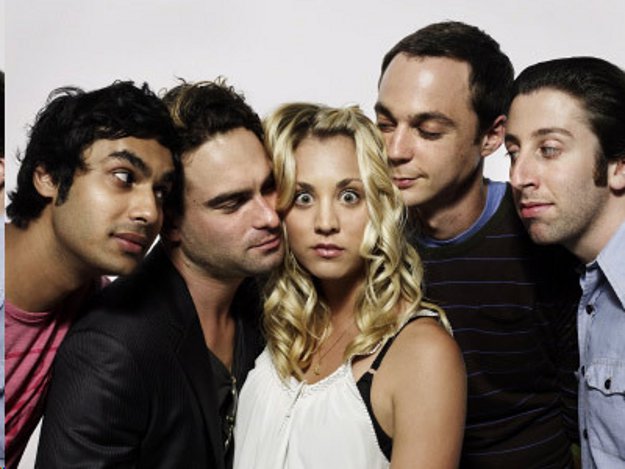The Social Renaissance of Science

Climate change. Creationism versus evolution. Deep space travel. Tesla electric cars. These are just a few buzzwords that have been repeatedly popping up in current news over the last few years. What ties them all together is that they’re science-related. From literature and entertainment to advertising and education, it seems as if science, and the appreciation of science, is entering a social renaissance in the 21st century.
Given that society today is heavily technology-based, this shouldn’t come as a big surprise. Science and technology go hand-in-hand. Yet some of the most talked about recent events garnered a lot of attention in the mainstream. Last year’s sci-fi thriller Gravity, gained a lot of attention due to its special effects, the concept the film was based on, and some of its scientific errors. The announcement of the Higgs Boson particle in 2012 was a big hit as well; referred to as the ‘God particle,’ the Higgs Boson was speculated to be the key to understanding why there is diversity and life in the universe. ‘Science’ was also the word of the year in 2013, according to Merriam-Webster’s Collegiate Dictionary (as opposed to the Oxford Dictionary’s word of the year ‘selfie’).
It is learned in our history classes that the basis of modern science came about during the Scientific Revolution on the heels of the Renaissance in Europe, from the mid-16th century to the 18th century. Developments in math, physics, astronomy, biology and chemistry changed the way society understood and interacted with the world around them; the Scientific Revolution gave us the three laws of motion, modern algebra and advances in human anatomy as well.
While the United States was isolated from Europe, the country eventually caught up with scientific advancement by the end of the 18th century, mostly because scientists were emigrating from Europe to the U.S. Among them were Alexander Graham Bell and Nikola Tesla, who both made contributions in the electric field.
The United States’ greatest known periods of science, however, were the Atomic Age and the Space Age. During these two overlapping periods of history, there was an increase in interest and patronage of science, scientific research and scientific influence on pop culture. The Atomic Age is of course characterized by the atomic bomb dropped on Hiroshima during World War II, but there were also advancements in nuclear medicine—specifically the discovery and development of radionuclides and radiopharmaceuticals for medical imaging devices.

The Space Age—from the launch of Sputnik I—had more of a cultural impact. The race against Russia to lay claims to space was a spark that launched a patriotic and competitive surge in the United States, because the universe was still an unknown, “undiscovered” territory. It was Manifest Destiny all over again, except this time reaching towards the heavens instead of out west. Most importantly, the Space Age gave us NASA and its space programs, which fed the dreams of human expansion and discovery into the universe.
In the mainstream, science fiction picked up on this. While the genre had been around since the late 1800s and popularized in the 1930s, it was the ‘50s through the ‘80s that stand out as being the definitive time of science fiction. There was Star Trek, Star Wars, The Jetsons, Plan 9 from Outer Space and the critically-acclaimed film 2001: A Space Odyssey, among many other series. The media gave a projected idea of what life in space might be like, what the possibilities were with the advancements of science and technology that was being produced. The ideas of ships with warp drives, sentient robots, and interactive technology all stemmed from the popular culture of that time, and those ideas are still with us as we imagine what the future may be like. Science and space appreciation, then, was at its peak, especially with the Apollo 11 moon landing of 1969. Speculation and advancements in science were being made consistently well into the ‘90s and 2000s—but by then the Internet and computer technologies became the new darlings of the future for the United States.
In popular culture as well, science became attached to the ‘nerds’ and ‘geeks’ of society. Whatever the reason—the closing of NASA’s space shuttle program in the ‘90s or a focus more towards global business—science was socially thrust to the wayside.
So why is it now that we’re seeing commercials that are encouraging girls to go into the fields of math and science? On the one hand, for the competitive United States, it is a need to catch up with other first-world countries in the field. The National Math + Science Initiative shows how American education in primary and secondary schools is declining by 44 percent. To combat this, a new strategy was started in 2010 to reorganize and increase STEM (science, technology, engineering and math) education, where millions of dollars would be redirected towards programs and funds that increase the participation in these activities.

On the other hand, there is also the reclamation and popularization of ‘geek culture.’ Popular shows such as The Big Bang Theory (which is a sitcom about a few socially inept but smart nerds), Doctor Who, NOVA, and Mythbusters have a focus on science, technology and an understanding and appreciation of the universe at large. The geek, the smart kid, who was once criticized and bullied is now being favored and appreciated. It is a combination of these two factors, society and education, also thrown in with a little nostalgia, promoting the sciences again that have sparked a new appreciation: how else could beloved ‘90s television character (and scientist) Bill Nye the Science Guy’s debate against creationist Ken Hamm have been one of the most talked about events of this year?
Lastly, June 8th marked the season finale of Cosmos: A Spacetime Odyssey, the science documentary television series that aired on Fox this past year. Presented by astrophysicist Neil deGrasse Tyson, the show was considered a follow-up to the original Cosmos: A Personal Voyage--which featured science titan Carl Saga—and was an attempt to raise science literacy and integrate science in popular culture. According to TV ratings, Cosmos averaged roughly 5 million viewers per episode, about 65 million viewers total for its first season. And while those numbers can’t compare to the original Cosmos ratings—an estimate of 500 million to 1 billion viewers worldwide—it’s a positive progress mark of the current mainstreaming of science. As deGrasse Tyson said in an article for Soapboxscience, “…science matters in our lives for us to be better shepherds of not only our civilization, but the world.”
Highbrow Magazine


































































































































































































































































































































